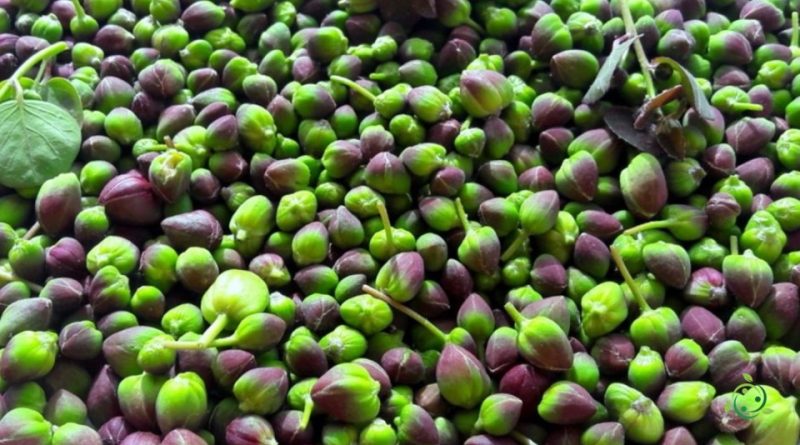Nutritional value of Caper
Nutritional value of Caper
The caper (Capparis spinosa L., 1753) is a small branched shrub or suffrutix with a prostrate-drooping habit belonging to the Capparaceae family.
The buds of this plant, called capers, are consumed, and more rarely the fruits, known as cucunci or caper fruits, and the vegetative tips when they are tender. The buds and fruits are preserved in oil, vinegar or salt, while the tender vegetative tips can be prepared as vegetables.
Characteristics –
The caper is a perennial plant native to the Mediterranean regions, known mainly for its edible buds, known as capers, which are used in cooking to flavor various recipes.
This plant can reach a height of 1-1.5 meters.
The leaves are oval or lanceolate in shape, dark green in color. They are arranged alternately along the branches.
Caper flowers are large and showy, usually white or pale pink in color. They can bloom in spring and early summer.
Each flower has numerous stamens, which give a jagged and interesting appearance to the flower.
Caper buds are the most popular in the kitchen. They are small and turgid, usually harvested before the flower has fully opened.
The fruits that follow flowering are capsules that contain numerous seeds.
The caper plant has a robust and adaptable root system that allows it to survive in arid and poor soil conditions.
The caper thrives in hot, dry climates, typical of Mediterranean regions. It adapts well to poor and stony soils.
It can be grown both in pots and in the garden.
Propagation is commonly done via seed or cuttings.
Requires good sun exposure and a moderate amount of water.
The plant is drought resistant, but regular watering can encourage bud production.
Nutritional sheet –
Capers are used in cooking to flavor salads, sauces, fish dishes and other preparations.
They can be eaten fresh or pickled.
Capers are a source of fiber, vitamins and minerals. They are also known to contain antioxidant compounds.
In summary, the caper is a resistant and versatile plant, appreciated not only for its ornamental beauty but also for the gustatory contribution it offers in the kitchen.
Here is a rough estimate of the nutritional values per 100 grams of capers preserved in salt:
– Calories: 23 kcal;
– Protein: 2.4 g;
– Fat: 0.9 g;
– Carbohydrates: 4.3 g;
– Fibres: 3.2 g;
– Sugars: 0.4 g;
– Saturated fatty acids: 0.1 g;
– Monounsaturated fatty acids: 0.1 g;
– Polyunsaturated fatty acids: 0.3 g;
– Sodium: approximately 4000 mg (this value may vary depending on the type of preparation and conservation of the caper).
It is important to note that nutritional values may vary slightly based on the method of preparing and storing capers. If they are pickled or pickled, the sodium content will be lower than capers stored in salt. Additionally, capers are a significant source of fiber, vitamins and minerals, such as vitamin K, copper and iron.
Property –
The buds of this plant, called capers, are consumed, and more rarely the fruits, known as cucunci
The caper (is a plant whose parts, including buds, flowers and leaves, are commonly used in cooking for their unique and aromatic flavor.
Capers contain antioxidant compounds, such as flavonoids, which help neutralize free radicals in the body, reducing the risk of cell damage.
Caper provides vitamin K, vitamin C, vitamin B, calcium, iron, magnesium and potassium. These nutrients are important for bone health, blood clotting, the immune system and more.
Some substances present in capers can have antibacterial and anti-inflammatory effects, contributing to overall health.
The potassium present in capers can help keep blood pressure under control and reduce the risk of hypertension.
Capers are sometimes associated with digestive benefits. They can help in the production of gastric juices and facilitate digestion.
Capers are relatively low in calories, making them a healthy choice for those who are calorie-conscious in their diet.
Capers are widely used as a condiment in many cuisines around the world, especially Mediterranean cuisines. They are often marinated or pickled and are added to salads, fish dishes, sauces and other culinary preparations to add flavor.
Additionally, in some folk medical traditions, capers have been used to treat ailments such as rheumatism, digestive problems, and liver disorders.
However, its use for medical purposes must always be adopted after medical consultation.

